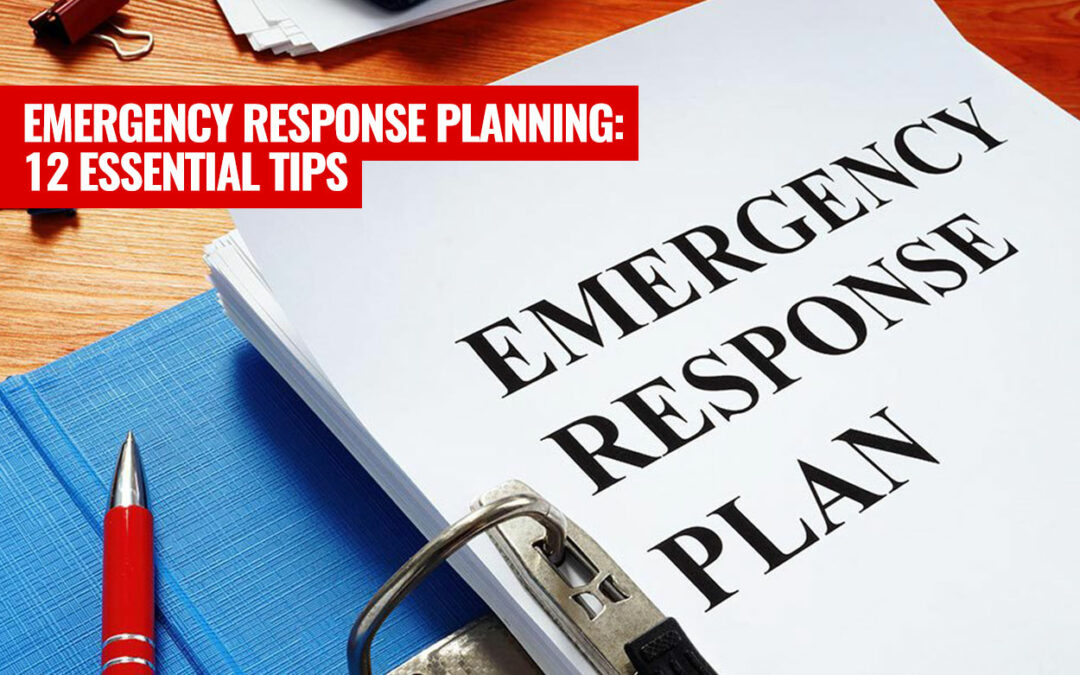Emergency Response Planning: 12 Essential Tips for a Safe Workplace
1. Understanding the Importance of Emergency Response Planning
A well-structured emergency response plan is the cornerstone of any safety management program. It lays the foundation for swift and effective actions during emergencies, ranging from natural disasters to workplace accidents. By acknowledging the significance of preparedness, your organization can instill a culture of safety and resilience among employees.
2. Assessing Potential Hazards and Risks
Begin your emergency response planning by conducting a comprehensive hazard assessment. Identify potential risks specific to your workplace, considering factors like location, equipment, processes, and employee demographics. Understanding these risks allows you to tailor your response plan to address specific scenarios.3. Establishing an Emergency Response Team
Assemble a dedicated emergency response team comprising individuals with diverse skills and expertise. Ensure they are trained in emergency procedures, communication, and leadership. The team’s primary role will be to coordinate responses and provide guidance during crisis situations.4. Creating Communication Protocols
Efficient communication is crucial during emergencies. Establish clear communication protocols that outline how information will flow among employees, the emergency response team, and relevant authorities. Ensure that communication channels are reliable and easily accessible.5. Developing Evacuation Plans
Crafting detailed evacuation plans is essential to ensure the safe and orderly evacuation of employees in case of emergencies. Consider multiple evacuation routes and provide clear signage throughout the workplace. Conduct regular evacuation drills to familiarize everyone with the procedures.6. Providing First Aid and Medical Assistance
Include provisions for on-site first aid and medical assistance in your emergency response plan. Train employees in basic first aid and CPR to address injuries promptly. Maintain well-stocked first aid kits and establish a clear process for accessing medical support during emergencies.7. Integrating Technology and Resources
Leverage modern technologies, such as emergency alert systems and mobile applications, to enhance your emergency response capabilities. These tools can expedite communication and ensure timely dissemination of crucial information.8. Conducting Training and Drills
Regular training and practice drills are vital for refining your emergency response plan. Simulate various emergency scenarios to evaluate the efficiency of your procedures and identify areas for improvement. Encourage employee participation to boost preparedness levels.9. Ensuring Accessibility for All
Inclusivity is paramount in emergency response planning. Account for employees with disabilities or special needs and provide appropriate accommodations to ensure their safety during crises.10. Reviewing and Updating the Plan
An emergency response plan is a dynamic document that should evolve with your organization. Conduct regular reviews and updates, especially after any significant changes in the workplace, to ensure its continued relevance and effectiveness.11. Collaborating with Local Authorities
Engage with local emergency services and authorities to enhance coordination during critical situations. Familiarize them with your emergency response plan, and seek their input for valuable insights.12. Instilling a Culture of Safety
Lastly, foster a culture of safety among your workforce. Encourage open discussions about safety concerns and commend safe practices. When employees prioritize safety, they become active participants in the success of your emergency response plan.By incorporating these 12 essential tips into your emergency response planning, you are proactively safeguarding your workplace and its invaluable human resources. Remember that preparedness is an ongoing process, and staying vigilant can make all the difference during times of crisis. Implement these strategies to build a resilient organization that prioritizes the well-being of its employees and thrives even in the face of adversity. Stay safe, prepared, and confident in the knowledge that your organization is ready to face any challenge that comes its way.

